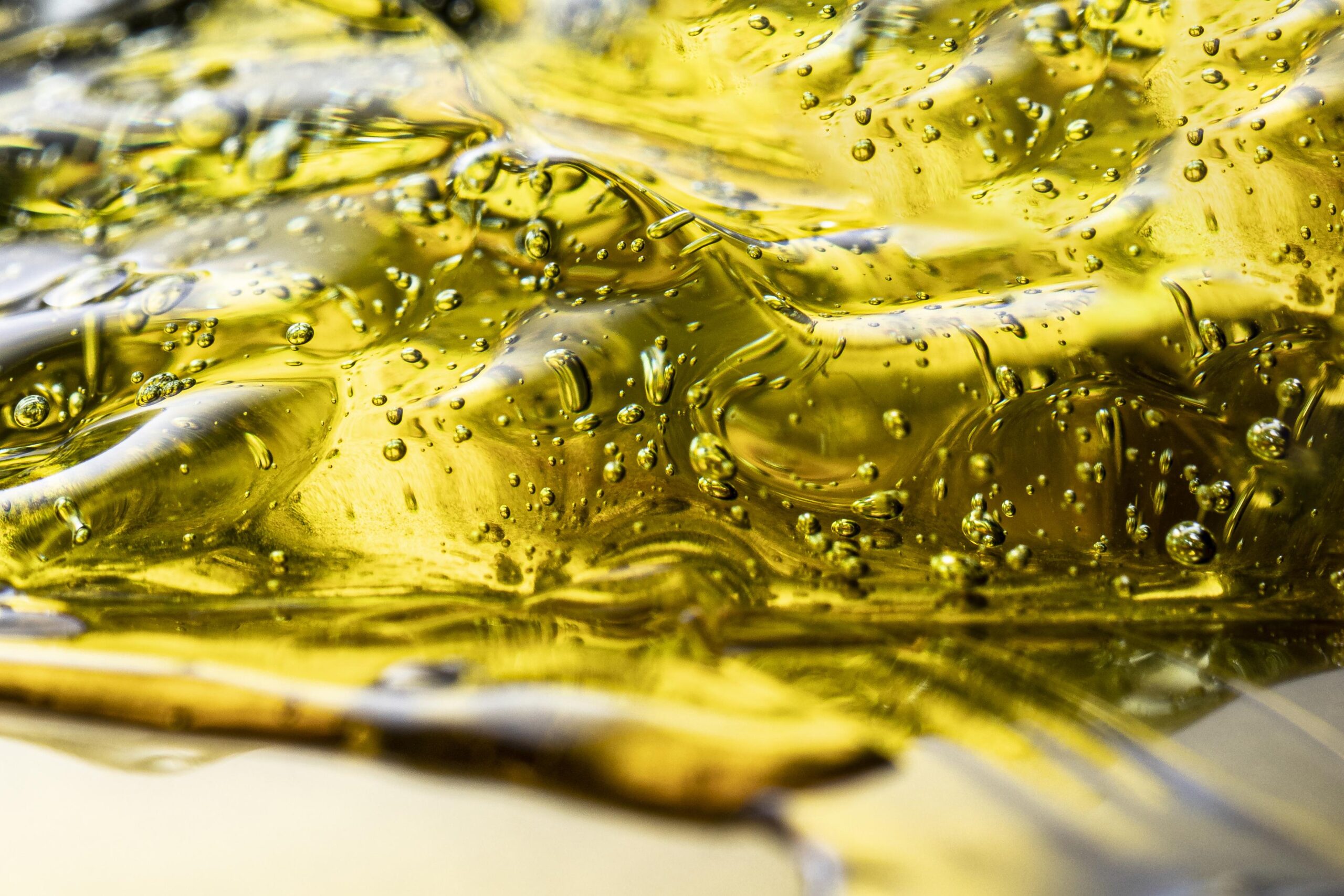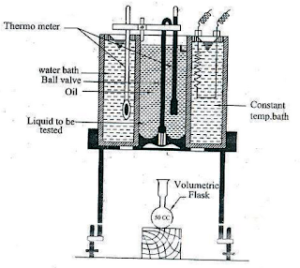
Mechanical Duniya
Mechanical Duniya - It's All About Machines !

All you need to know about Redwood Viscometer
By Dr. Paresh Gujarati

The nature and analysis of flow depend on the thermophysical properties such as the viscosity of the fluid being considered. There are various methods for the determination of fluid viscosity, namely the capillary tube method, falling sphere method, rotating cylinder method, or Redwood viscometer.
Viscosity measurement is important for a wide range of applications in various fields, including science, industry, and everyday life. Viscosity is a measure of a fluid’s resistance to flow, and understanding and measuring viscosity is essential for better understanding and controlling the behavior of fluids and materials, leading to improved efficiency, quality, and product development.
The Redwood viscometer is normally used by the petroleum and chemical industries. Let us first understand the meaning of viscosity.
Table of Contents
What are Viscosity and Viscometer? :
It is a measure of the resistance offered by one layer of fluid to the other layer of the same fluid during motion. It is expressed in Pa.s unit. The viscosity of the fuel or petroleum products is experimentally measured by a device called a viscometer.
A Redwood viscometer is used to determine the viscosity of petroleum products. It determines the viscosity in terms of seconds (which are terms as Redwood seconds), it’s the time taken by oil to pass through a standard orifice, and the collection of the same oil in a 50 cc or 50 ml flask. Originally Redwood Viscometer was developed for the measurement of the viscosity of petroleum products .
Types of Redwood Viscometer
‘Redwood Viscometer’ are of two types:
1. Redwood Viscometer No.1 (For fluid having viscosity corresponds to Redwood seconds less than 2000) 2. Redwood Viscometer No. 2 ( For fluid having viscosity corresponds to Redwood seconds greater than 2000). or Type No. 1 & 2 is used depending on the time of oil flow through an orifice at the desired temperature is greater or less than 2000 seconds. Normally viscosity of highly viscous fluids is determined by the use of Type 2.

The difference between Type 1 & 2 is the difference in orifice diameter.
Formula to convert Redwood seconds to kinematic viscosity unit i.e. centistokes.
= A.t-B/t (Where A = 0.26 and B = 171). Where t is flow seconds or Redwood seconds.
This experiment measures the kinematic viscosity of the fluid, not dynamic or absolute viscosity. The absolute viscosity is found by measuring the density of the fluid whose viscosity is being measured. The temperature of the liquid must be considered while getting the value of the density of the liquid.
Thus, Absolute Viscosity = Kinematic Viscosity x Density of liquid
Experimental procedure:
- Fill the oil cup with oil to the required oil level indicated by the marker point. Also, fill the water bath with the required quantities of water to maintain the uniform temperature of the oil. Use different thermometers for water and oil temperature measurements.
- Heat the water at a uniform temperature. This heated water in turn heats the oil at a uniform temperature.
- When the required temperature of the oil is attained, lift the ball above the orifice hole.
- Allow the oil to pass through it (start the stopwatch) and collect 50 CC or 50 ml of oil in the volumetric flask.
- The measured seconds are in terms of the viscosity of the oil measured.
- Repeat the entire process at different temperatures to get the viscosity values at different temperatures.
Pros and Cons:
The redwood viscometer offers a simple and affordable option to measure the viscosity with ease. On the other hand, it has lower accuracy and can be used for specific petroleum products only. This is a limitation of the redwood viscometer.
Watch the entire process in this video .
Get more such basic concepts of fluid and fluid mechanics from this book .
1. What is a Redwood viscometer, and what is its primary purpose?
- Answer: A Redwood viscometer is an instrument used to measure the kinematic viscosity of petroleum products, especially oils and lubricants. Its primary purpose is to assess the flow properties and quality of these products.
2. How does a Redwood viscometer work?
- Answer: A Redwood viscometer works by heating the test sample to a specific temperature and then measuring the time it takes for the sample to flow through a calibrated tube. The flow time is used to calculate the kinematic viscosity of the fluid.
3. What is kinematic viscosity, and why is it important in the petroleum industry?
- Answer: Kinematic viscosity is a measure of a fluid’s resistance to flow at a specific temperature. In the petroleum industry, it’s crucial because it helps determine the suitability of oils and lubricants for various applications and ensures that they meet industry standards.
4. What is the difference between Redwood Viscometer 1 and 2?
Answer: If the viscosity of the fluid is greater than 2000 Redwood seconds, the viscometer 2 is selected else redwood viscometer 1 ( If the viscosity of the fluid is less than 2000 Redwood seconds).
5. Why is temperature control important when using a Redwood viscometer?
- Answer: Temperature control is vital because viscosity is highly temperature-dependent. Maintaining a consistent test temperature ensures accurate and reliable viscosity measurements.
6. How is the kinematic viscosity calculated from Redwood seconds (RS)?
- Answer: The kinematic viscosity is calculated using a calibration factor specific to the viscometer. The formula is Kinematic Viscosity (cSt) = Redwood Seconds (RS) x Calibration Factor.

7. What are the applications of Redwood viscometers outside the petroleum industry?
- Answer: While primarily used for petroleum products, Redwood viscometers can be used to measure the viscosity of other fluids and semi-fluid materials in various industrial and research applications.
8. Are there any limitations or factors that can affect the accuracy of Redwood viscometers?
- Answer: Yes, factors like the condition of the glass tube, temperature control, and the calibration of the instrument can impact the accuracy of Redwood viscometers.
9. How does the Redwood viscometer compare to other viscosity measurement methods, such as kinematic viscometers or capillary viscometers?
- Answer: Redwood viscometers are a simpler and more cost-effective method for measuring viscosity, but they may not offer the same precision as other more advanced instruments. The choice of instrument depends on the specific requirements of the application.
10. What are the industry standards for viscosity measurements using Redwood viscometers?
- Answer: Various industry organizations, such as ASTM International and ISO, provide standards and guidelines for performing viscosity measurements with Redwood viscometers. Users should refer to these standards for proper testing procedures.
Related Post
All you need to know about grease penetrometer, ‘bomb calorimeter’ for calorific value of fuel determination, mechanical engineering videos : anemometer for air velocity measurement, 11 thoughts on “all you need to know about redwood viscometer”.
what constant to be used?
Does we use redwood viscometer now a days on field?
In Redwood Viscometer in order to find Kinematic Viscosity,V= ((A x t)-(B/t) ) how the values of constants A & B are taken? How do we determine viscometer constant?? Can anyone help me with a convincing solution.
For Redwood viscometer 1, A=0.26 and B=171 The equation: At-B/t, t=Redwood seconds
Yes. Normally it is used for petroleum products.
The value of A and B are determined from design of experiments and can be obtained by calibration of the apparatus. A=0.26 and B=171
nice explaination sir
Where at-b/t equation have which unit
For red wood no.1 and redwood no.2, is same formula to be used?
What is the unit of temperature? Celsius or Kelvin?
Can be any. Does not matter.
Leave a Reply Cancel reply
You must be logged in to post a comment.
Blunder – Power Steering Fluid mixed up with Engine Oil
Engineering faults in train accidents: a global perspective with a focus on railways, becoming a valuer (plant and machinery) in india: a guide for mechanical engineers, from ice age to space age: the evolution of cryogenics.
- Hydrodynamics
Determination of viscosity of lubricant by Red Wood Viscometer

Related documents

Add this document to collection(s)
You can add this document to your study collection(s)
Add this document to saved
You can add this document to your saved list
Suggest us how to improve StudyLib
(For complaints, use another form )
Input it if you want to receive answer

IMAGES
COMMENTS
Jul 30, 2019 · Redwood Viscometer No.1 (For fluid having viscosity corresponds to Redwood seconds less than 2000) 2. Redwood Viscometer No. 2 ( For fluid having viscosity corresponds to Redwood seconds greater than 2000). or Type No. 1 & 2 is used depending on the time of oil flow through an orifice at the desired temperature is greater or less than 2000 seconds.
Select the appropriate viscometer, either Redwood viscometer No.1 or 2 depending up on the nature of lubricating oil 2. Clean the viscometer cup properly with the help of suitable solvent e.g. CCl4, ether, petroleum spirit or benzene and dry it to remove any traces of solvent. 3. Level the viscometer with the help of leveling screws. 4.
EXPERIMENT: Redwood’s viscometer OBJECTIVES: To determine the variation of viscosity of lubricating oil and coconut oil with temperature INTRODUCTION: Lubricants are used mainly two reasons; (a) To reduce the resistance to relative motion between two surfaces in contact under pressure
This document describes an experiment to determine the viscosity of liquids and how it varies with temperature using a Redwood viscometer. The Redwood viscometer measures kinematic viscosity by timing how long it takes 50cc of a liquid to pass through a calibrated orifice at different temperatures. The experiment involves taking viscosity measurements of an oil sample at various temperatures ...
oil at different temperatures using Redwood Viscometer Apparatus required : Redwood Viscometer Thermometer 0-100°c (2 Nos) Stop watch 50 ml standard narrow necked flask Given Sample of oil Description : The redwood viscometer consist of vertical cylindrical oil cup with an orifice in the centre of its base . The orifice can be closed by a ball .
Sl.No. Name of the Experiment Page No. 7 Determination of the kinematic viscosity and dynamic viscosity of the given sample of oil using REDWOOD-I viscometer. 21 8 Determination of the kinematic viscosity and dynamic viscosity of the given sample of oil using REDWOOD-II viscometer. 26
a) The viscosity of a given sample using Redwood viscometer should be denoted with Redwood seconds at the specified temperature. b) Repeatability of the experiments should be duly compared at low and high temperatures. c) Convert the Redwood seconds to cSt with the empirical formulation 100 Redwood
Experiment No. 01: Viscosity [Redwood Viscometer] Aim: To study the effect of change of temperature on viscosity of lubricating oil by using a redwood viscometer no. 1 Objectives: After performing the practical, the learner will be able to: Understand the Redwood Viscometer apparatus for Viscosity. Understand the viscosity of oil.
Apr 20, 2015 · The experiment is carried out on Redwood Viscometer to analyze viscosity of different liquids at different temperatures. The redwood viscometer consists of vertical cylindrical oil cup with an orifice in the centre of its base. The orifice can be closed by a metal ball. A hook pointing upward serves as a guide mark for filling the oil.
EXPERIMENT NO. 1 DETERMINATION OF VISCOSITY OF OIL USING REDWOOD VISCOMETER Aim : To determine the kinematic viscosity and absolute viscosity of lubricating oil at different temperatures using Redwood Viscometer. Apparatus Required : 1. Redwood Viscometer 2. Thermometer 3. Stop Watch 4. 50 ml standard narrow necked flask. 5. Oil sample.